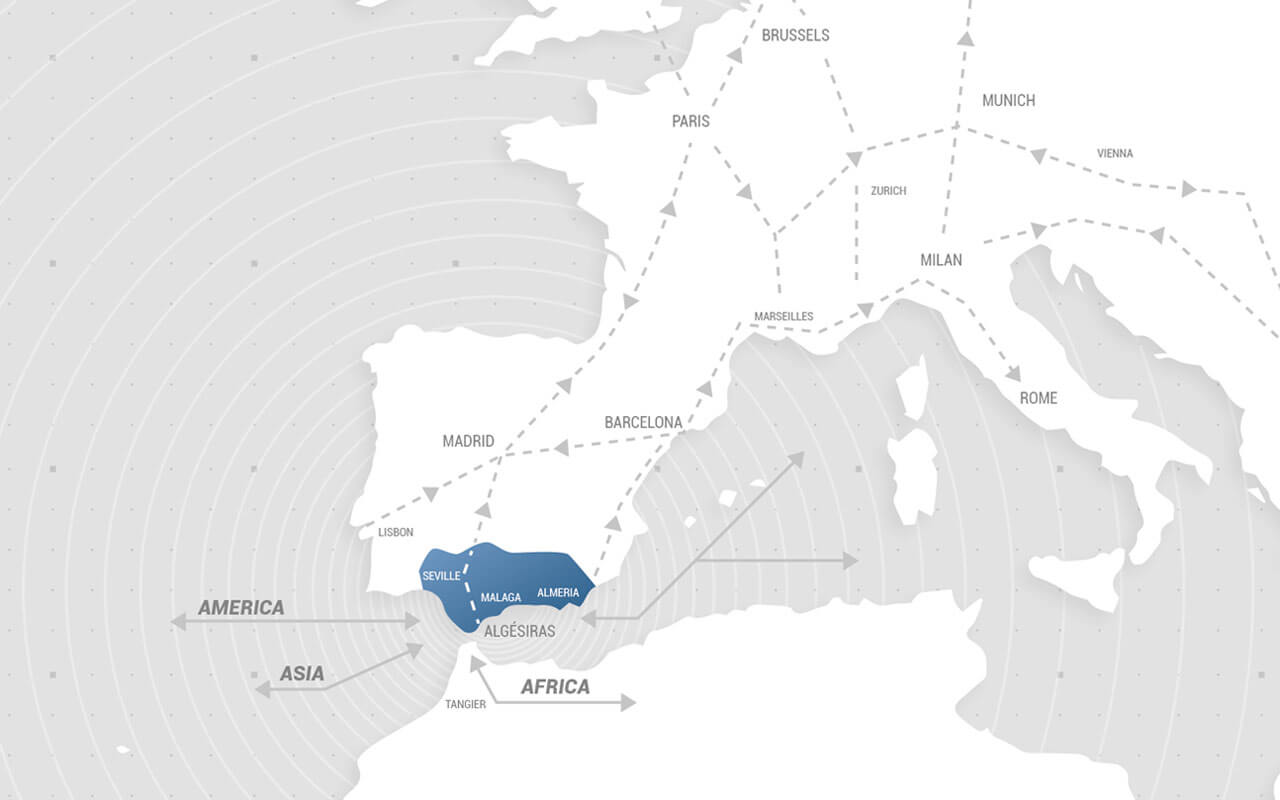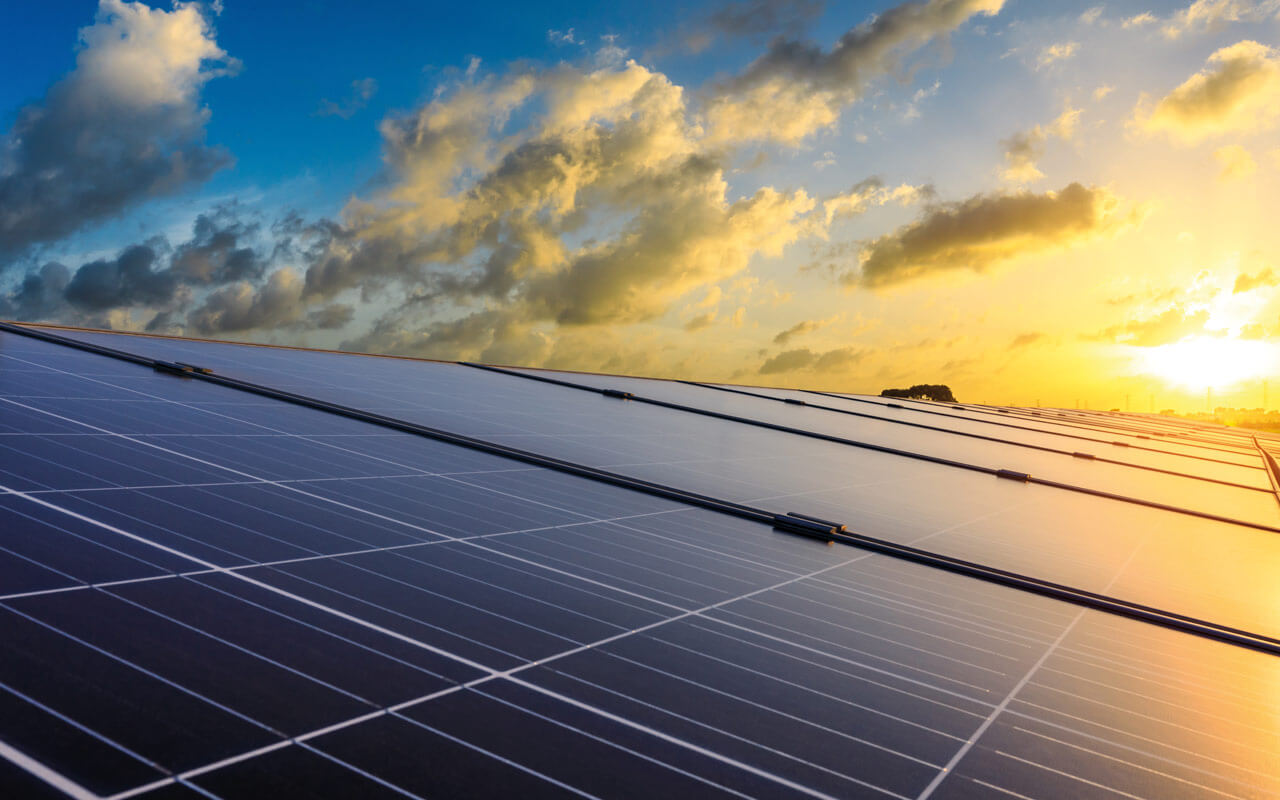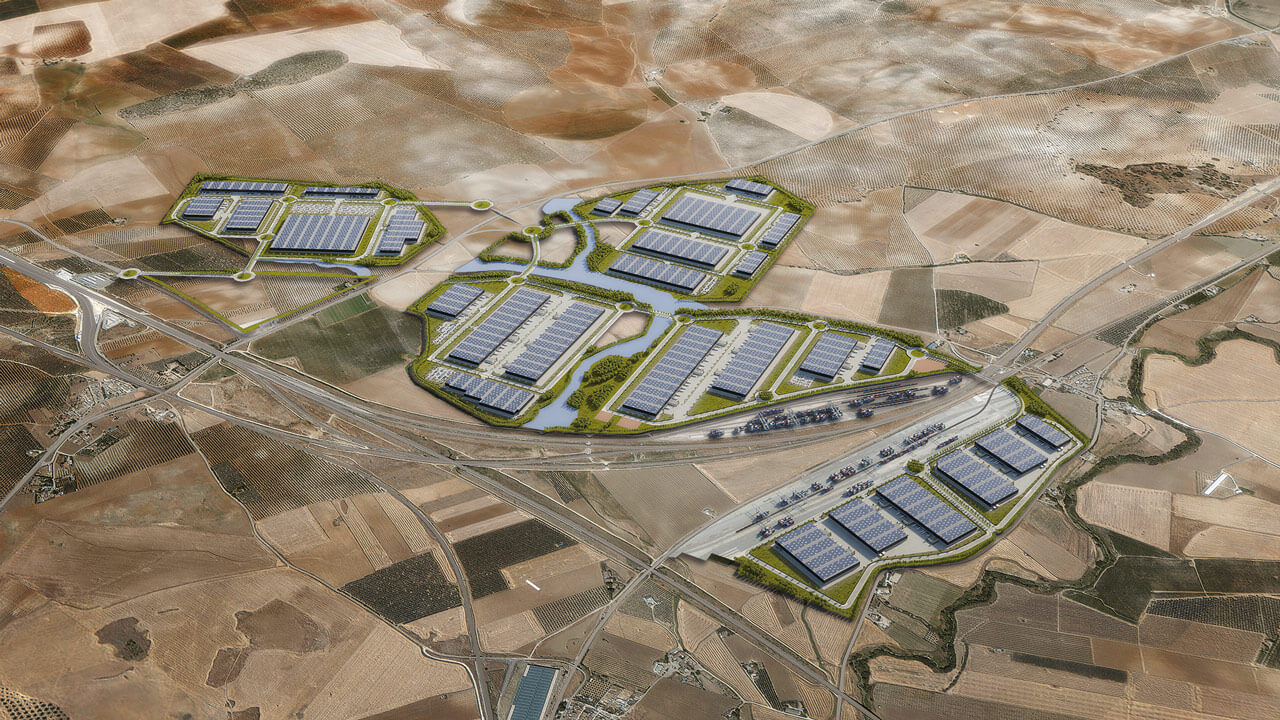GROUPE IDEC launches the development of a new XXL logistics and industrial park in southern Andalusia covering more than 300 hectares of and. Its ideal location at the crossroads between all the continents and its direct access to major transport networks make this a strategic interchange hub. This park is being developed to enable the integration of a great mix of activities and services and high added-value assets to create a rich and varied space. The energy dimension is also an integral part of the project since the goal is to achieve autonomy in terms of energy and to limit its carbon footprint.
The first XXL energy-positive activity park in Europe
GROUPE IDEC and PUERTO SECO ANTEQUERA (PSA) are proposing a new large-scale development in southern Andalusia. Ideally located at the crossroads between the ports of Malaga and Algeciras, and the Atlantic and Mediterranean railway corridors, it positions itself as the new benchmark XXL logistics and industrial zone in Spain. Thanks to its first-class infrastructure and direct access to major transport networks, it benefits from every asset to allow it to support the development of logistics and industrial activities in Spain reaching out to Europe and the rest of the world including, in particular, the ports in North Africa. Thought out from the outset with an ambitious virtuous approach, it aims to achieve a carbon-neutral footprint and make it possible, thanks to a range of sustainable sources of energy integrated in the Park, to produce more energy than it will consume.
 A strategic location
A strategic location
Located in the south of Spain, this park with port status is positioned as a strategic interchange hub. It benefits from all the advantages offered by Andalusia region, the country’s second largest and most heavily populated region. Antequera dry port is situated in the heart of Spain’s leading maritime zone and of Europe’s fifth port zone. It benefits from the proximity of the ports of Algeciras, Malaga and Cadiz offering it access to the traffic passing through the Strait of Gibraltar which channels the greatest concentration of maritime exchanges in the world. Furthermore, these ports are positioned at the meeting point between two railway corridors on the Atlantic and Mediterranean axes. They also benefit from privileged access to Europe and Africa in particular, and also to America and Asia from the Mediterranean and the Atlantic which makes it an ideal entry or exit gateway.
 Energy, a new resource
Energy, a new resource
This park also adopts an innovative environmental approach and a sustainable energy dimension. It is perfectly integrated into its environment and uses the natural resources that it has at its disposal. In this way it aims to achieve energy autonomy and limit its carbon footprint as much as possible through its energy mix. To achieve this the buildings will be built with sustainable materials that enter into a circular economy model. Furthermore, all the energy produced locally can be pooled by all of the zone’s future users thanks to a complete geothermal system on the scale of the park. It will be possible to share or store any surplus energy produced, or to redistribute it on the national power grid. The park will capitalise on the wind, water and sun to produce sustainable energy. The possibility of installing a hydrogen power plant is being examined.
A multi-activity park
PUERTO SECO ANTEQUERA enters into a mixed activity rationale. By proposing logistics, industrial and service facilities in one and the same zone, along with a variety of infrastructures, the teams at GROUPE IDEC are planning to provide a rich and varied space. This approach favours exchanges between the businesses on the same park, and enables the deployment of shared solutions and services.
Logistics will occupy a large part owing to the ideal location offered by this port because of its geographical position. The agribusiness sector will also have an important role to play in the park. Cadiz being Spain’s largest fishing port, and Algeciras the largest port through which the fruit and vegetables pass on their way out of North Africa, Antequera dry port enjoys a choice location in this sector owing to its proximity to those ports.
 High added-value services and assets
High added-value services and assets
This park also proposes high added-value services and assets. Notably it will facilitate the installation of a training centre in an Employment Centre dedicated to the logistics professions, which will make it possible to support people looking for work locally and to create about 3,000 jobs. A programme will be put in place between the various companies present in the Employment Centre to pool jobs, which will help to secure precarious jobs and meet the seasonality of certain activities present in the heart of the zone. With a view to promoting research and innovation at the port and create an innovative and connected ecosystem, strategic collaborations with universities and research centres will be set up to put the latest technologies at the service of logistics. Furthermore, the park’s port zone status will enable businesses to benefit from a system where taxes and customs duties will only be payable when the products leave the zone, which has an impact on cashflow management.
A project developed jointly with private- and public-sector players
This project has benefitted greatly from the support of the government of Andalusia which is extensively involved, in particular declaring this zone an “Area of Public Interest”, which has enabled the rapid urbanisation of the 300 hectares of land. It has also proposed the implementation of major infrastructure projects, a connection to the freight rail network and the development of road access thanks to the construction of a new motorway interchange. For this project, a joint initiative with the Andalusia Public Ports Agency has enabled the park to obtain port zone status which offers it all the advantages inherent to that status.
Launch of the construction works
The construction works on Antequera dry port began in June. The port will eventually cover more than 300 hectares of land, making 372,000 sq.m of buildable land available for the first phase of the project. This stage will be organisedaround a 196,000 sq.m multimodal railway terminal and other buildings.

 NON CONTRACTUAL PICTURE
NON CONTRACTUAL PICTURE